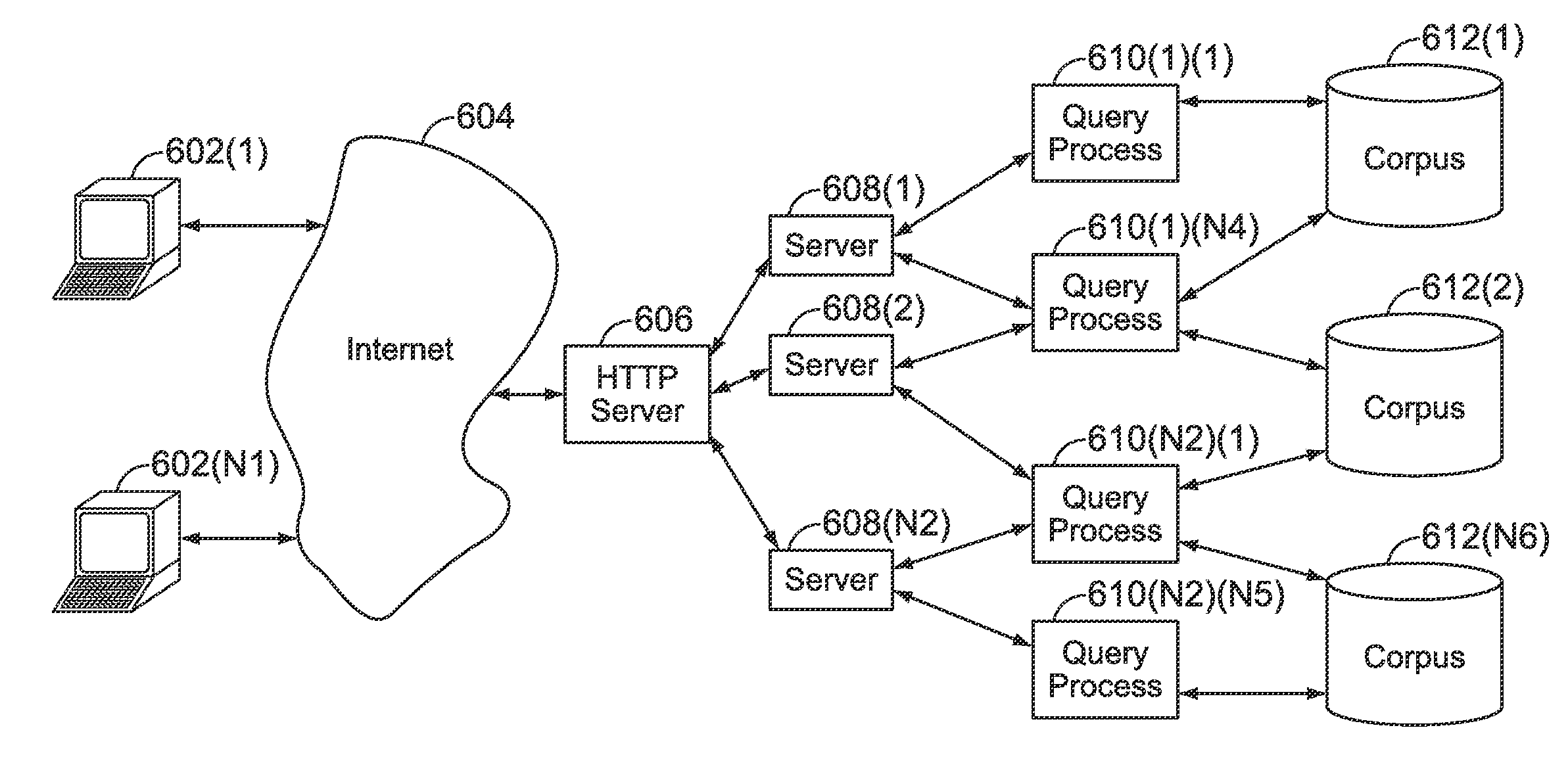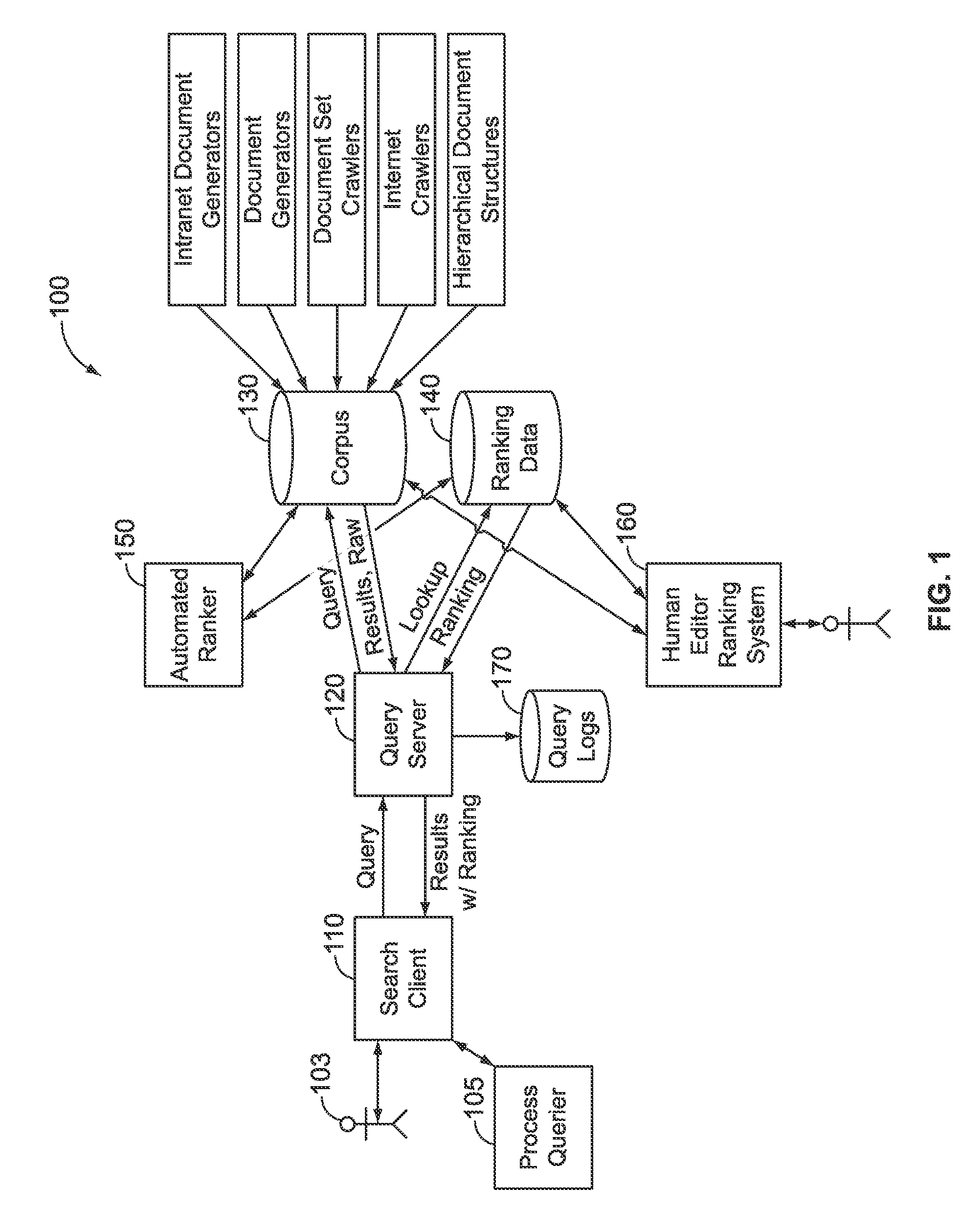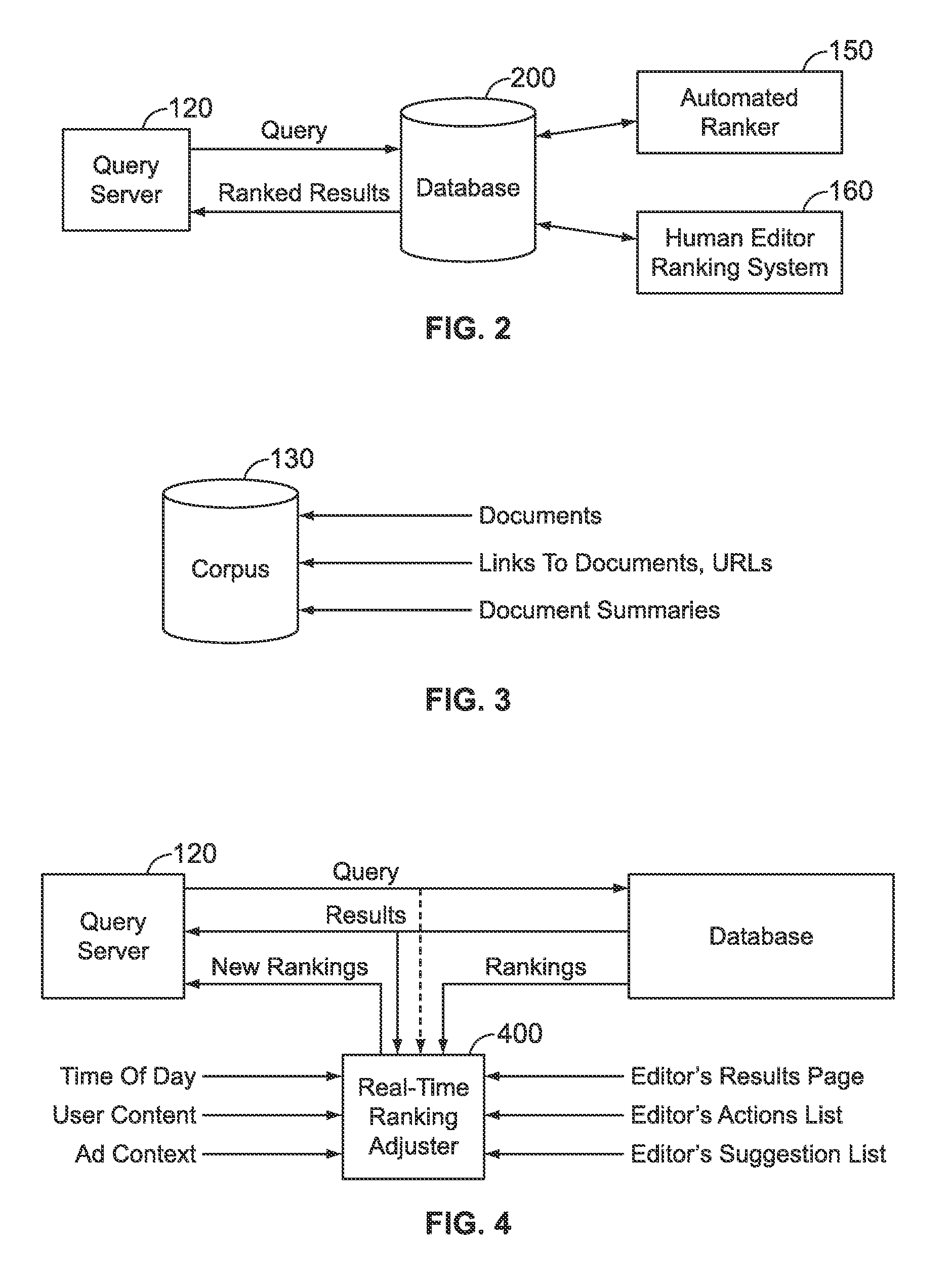Method and apparatus for search ranking using human input and automated ranking
a search ranking and human input technology, applied in the field of search document sets, can solve the problems of difficult to handle large numbers of queries and/or documents, difficulty in particular, and user inability to know exactly where the desired information is located
- Summary
- Abstract
- Description
- Claims
- Application Information
AI Technical Summary
Problems solved by technology
Method used
Image
Examples
case 1
[0068] New Kids in the Block
[0069]First consider a p0 that is close to p1, who has a new site N:[0070]blend.p1 −p0 “(1,2,3,4,5)”−r “(2,3,5,4,1)”−p1 “(1,2,N,3,4)” 2 3 5 N 4 1[0071]blend.p1 −p0 “(1,2,3,4,5)”−r “(2,3,5,4,1)”−p1 “(N,2,5,3,4)” N 2 3 5 4 1
[0072]Note that N is inserted into r in both cases. N is ranked #1 in the final list because it beat most of the editors' recommendations.
[0073]Now, consider p0 distant from p1:[0074]blend.p1 −p0 “(1,2,3,4,5)”−r “(5,4,3,2,1)”−p1 “(5,4,N,3,2)” 5 4 N 3 2 1[0075]blend.p1 −p0 “(1,2,3,4,5)”−r “(3,1,5,4,2)”−p1 “(N,5,4,3,1)” N 3 5 1 4 2
[0076]Notice that both r and p1 are blended to form the two outputs. Now, adding a new kid A into editor's recommendation:[0077]blend.p1 −p0 “(1,2,3,4,5)”−r “(A,1,5,4,2)”−p1 “(N,5,4,3,2)” A N 1 5 4 2
[0078]Element “3” is left out of the final blend because it was deliberately removed by the editors.
case 2
[0079] Lots of New Kids in the Block
[0080]The next two cases have several new sites in r and p1, who are naturally very distant from each other:[0081]blend.p1 −p0 “(1,2,3,4,5)”−r “(3,1,5,A,B)”−p1 “(N,M,3,O,P,1,2,4,5)” N M 3 O P 1 5 A B[0082]blend.p1 −p0 “(1,2,3,4,5)”−r “(3,5,A,B,C,D)”−p1 “(5,X,4,Y,1,Z,2)” 3 5 X A Y B C Z D
[0083]Note the blending and that the unrecommended sites seen by the editors are left out (2 and 4 in the first, and 1, 2 and 4 in the second). What follows is a case where p0 and p1 are not so distant:[0084]blend.p1 −p0 “(1,2,3,4,5)”−r “(3,5,A,B,C,D)”−p1 “(1,2,3,4,5,X,Y)” 3 5 A B C X D Y
[0085]Here, X and Y are simply inserted into the editors' recommended list. Now, consider demotions. Assume that editors decided to demote N and O:[0086]blend.p1 −p0 “(1,2,3,4,5)”−r “(3,5,A,1,B)”−p1 “(1,N,2,M,O)”−x “(N,O)” 3 5 1 A M B
[0087]We blend r with p1 but leave out N, O, and 2. This could also apply to suggestions that have been seen by editors but deliberately not added to ...
case 3
[0088] Extremes
[0089]Consider the extremes:[0090]blend.p1 −p0 “(1,2,3,4,5)”−r “(1,2,3,4,5)”−p1 “(A,B,C,D,E)” 1 A B 2 C 3 D 4 E 5[0091]blend.p1 −p0 “(1,2,3,4,5)”−r “(1,2,3,4,5)”−p1 “(A,B,C,D,E)”−x “(A,B,C,D,E)” 1 2 3 4 5[0092]blend.p1 −p0 “(1,2,3,4,5)”−r “(A,B,C,D,E)”−p1 “(1,2,3,4,5)” A B C D E
PUM
 Login to View More
Login to View More Abstract
Description
Claims
Application Information
 Login to View More
Login to View More - R&D
- Intellectual Property
- Life Sciences
- Materials
- Tech Scout
- Unparalleled Data Quality
- Higher Quality Content
- 60% Fewer Hallucinations
Browse by: Latest US Patents, China's latest patents, Technical Efficacy Thesaurus, Application Domain, Technology Topic, Popular Technical Reports.
© 2025 PatSnap. All rights reserved.Legal|Privacy policy|Modern Slavery Act Transparency Statement|Sitemap|About US| Contact US: help@patsnap.com



